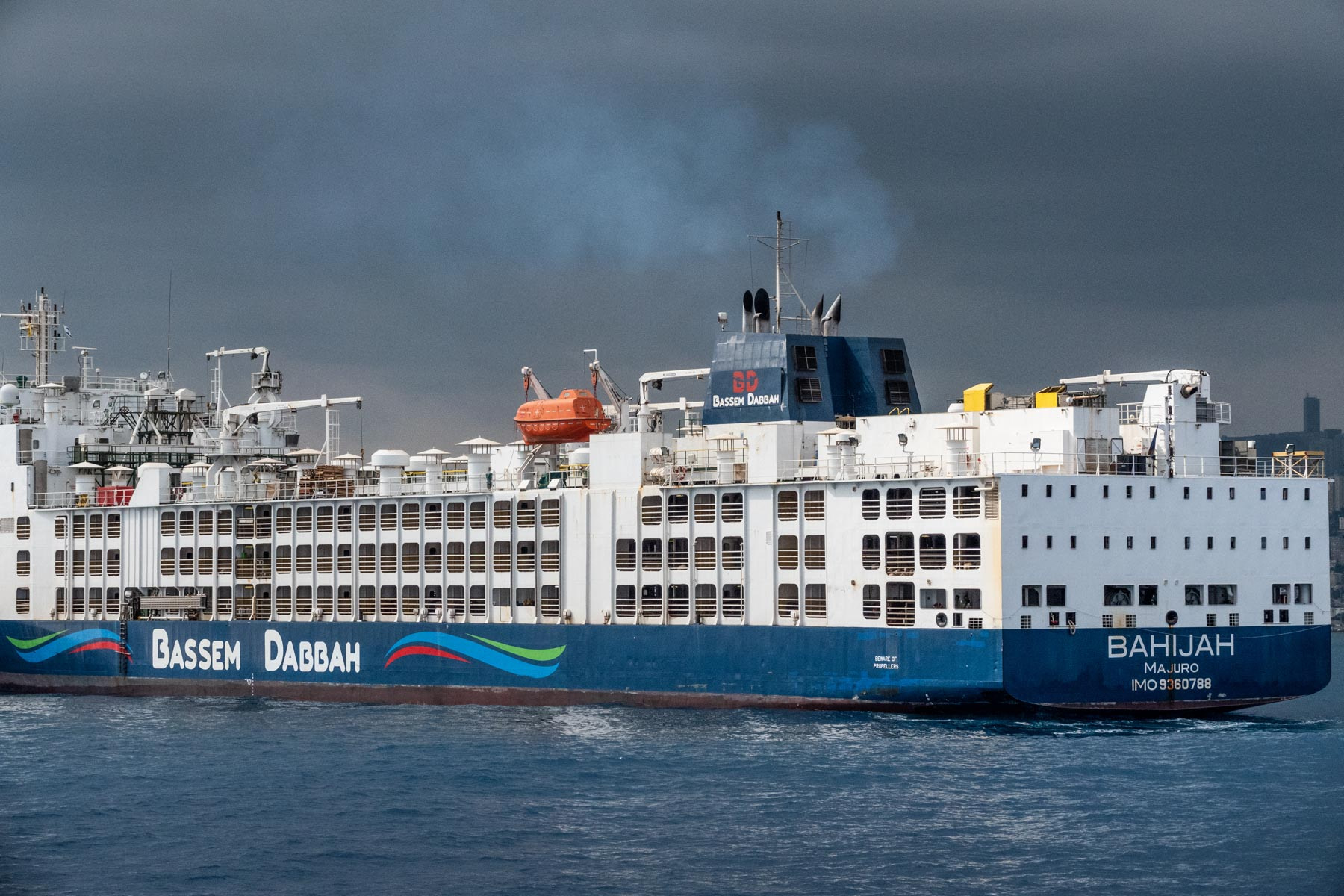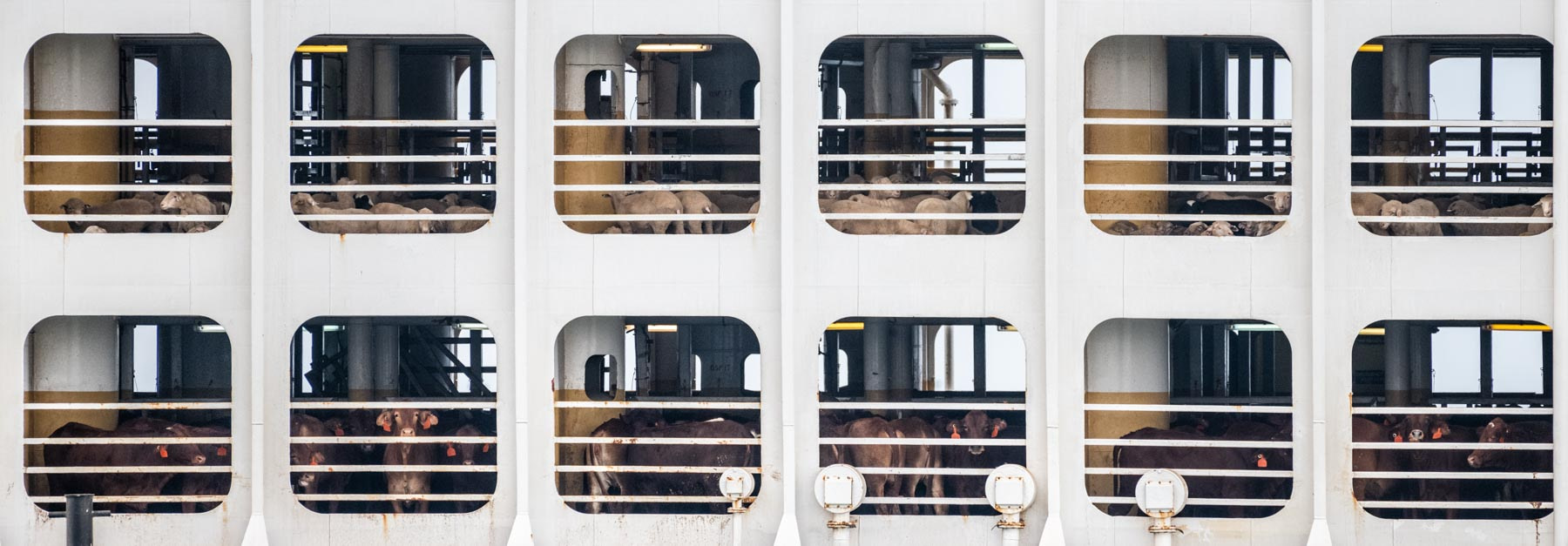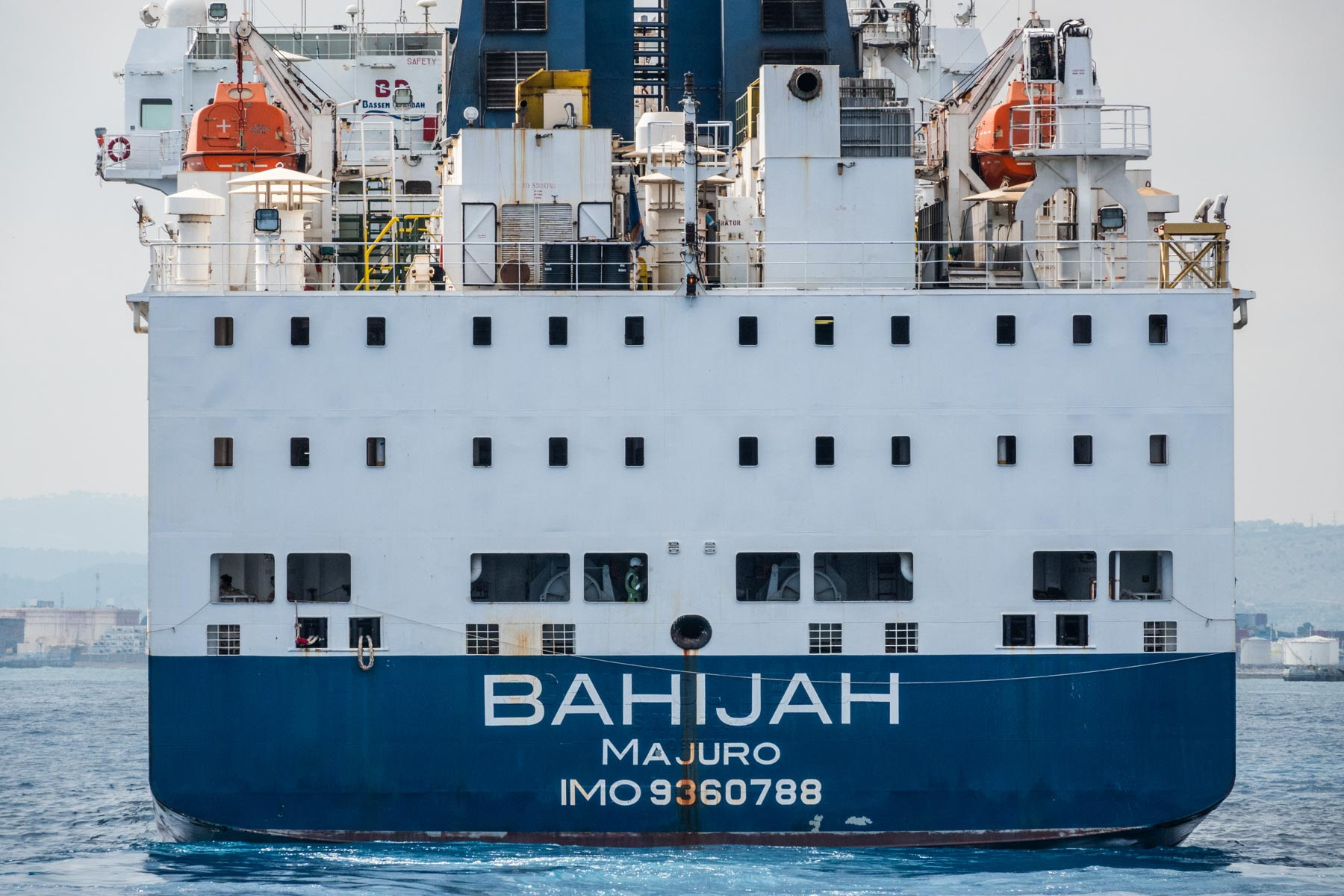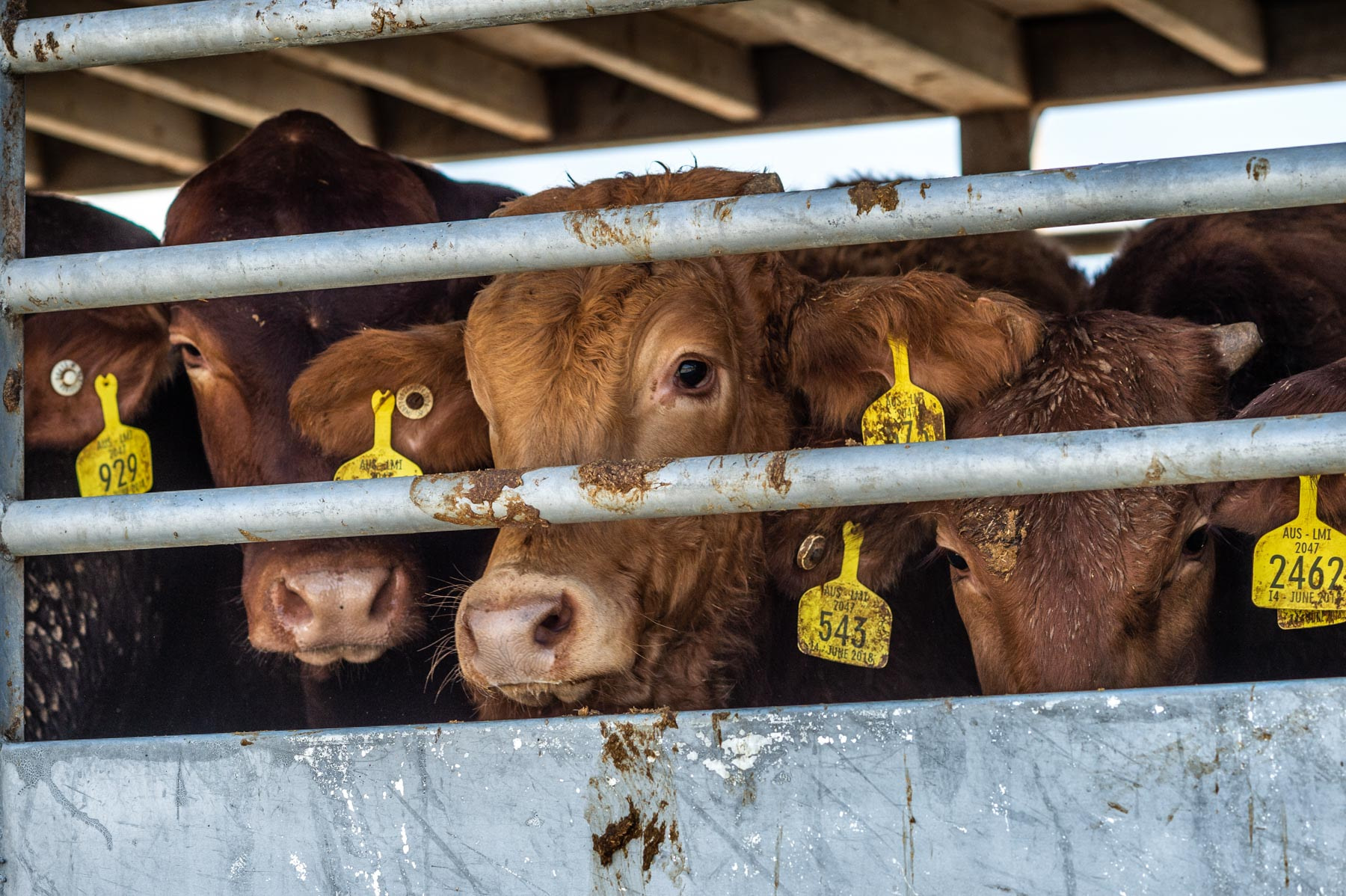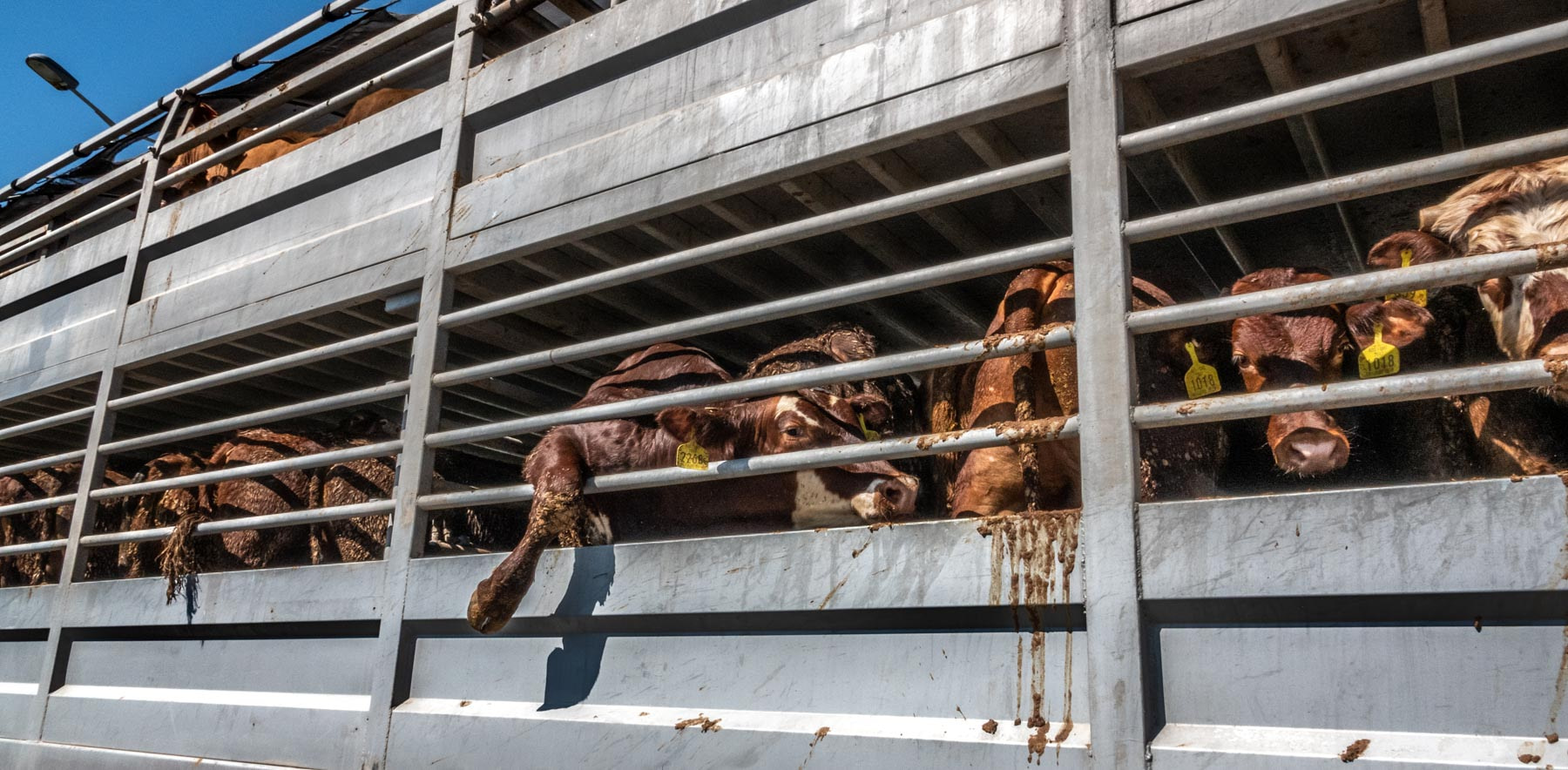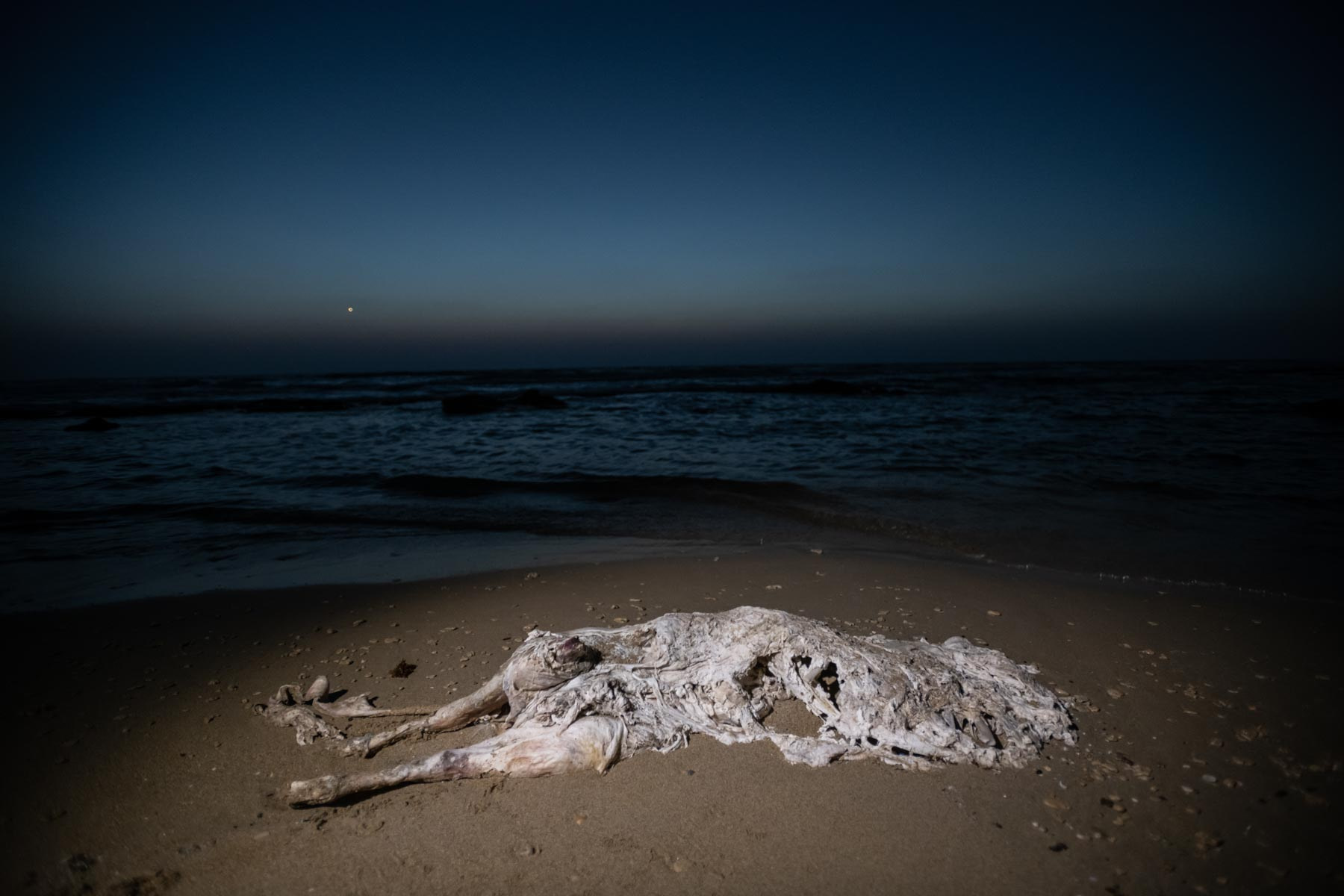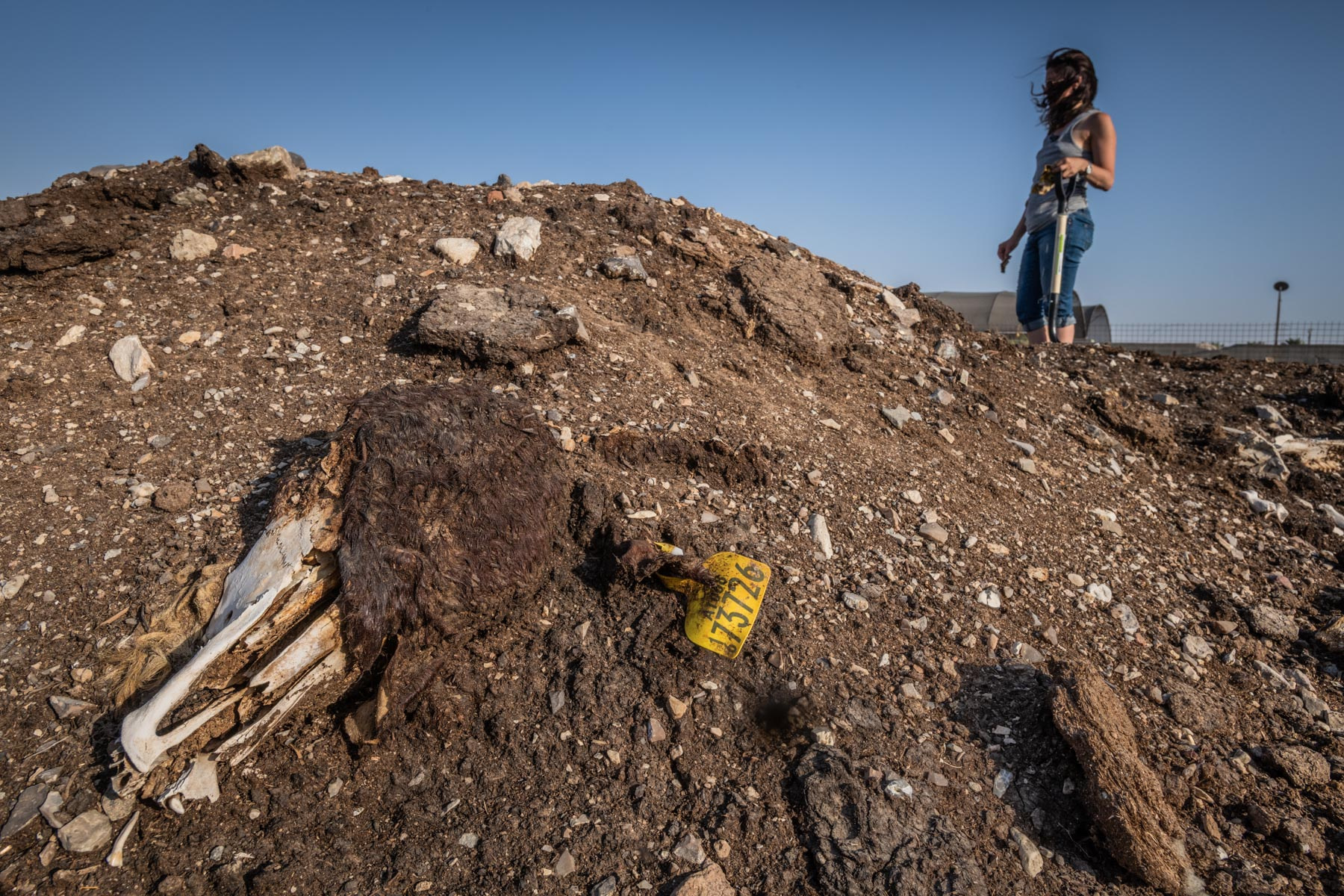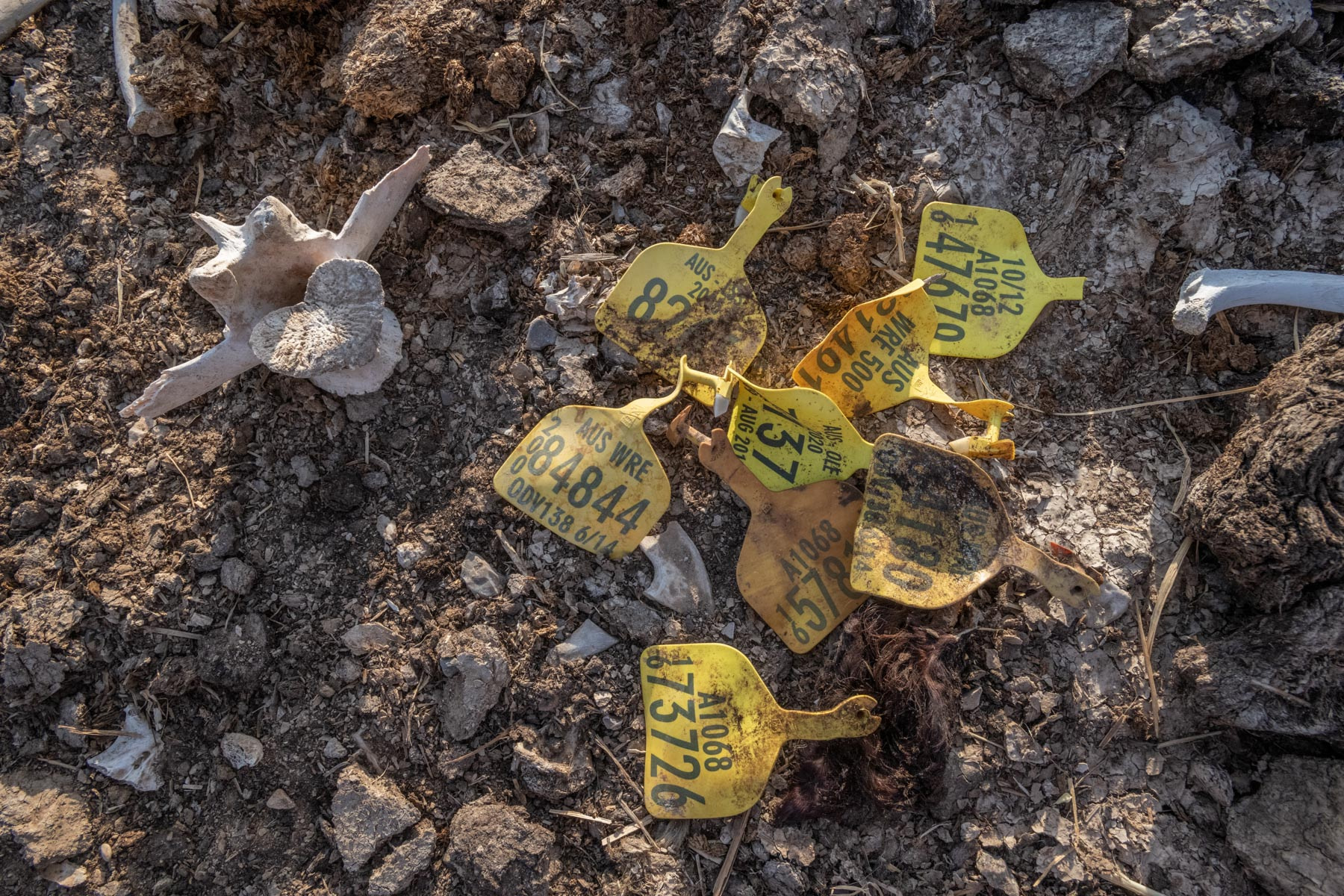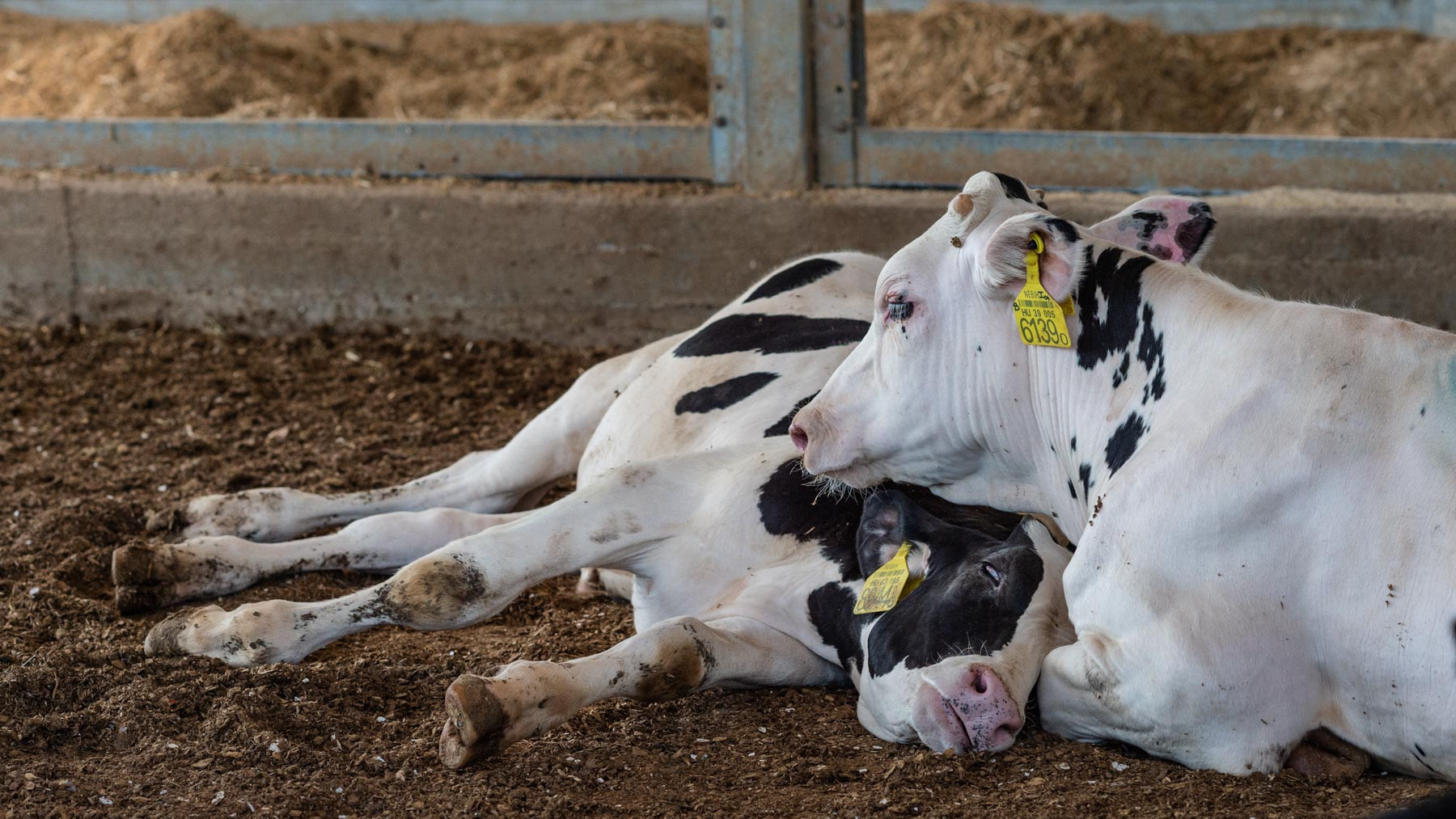Animals transported by sea from Australia to the middle east. Port of Haifa, Haifa, Israel, 2018.
Jo-Anne McArthur / Israel Against Live Shipments / We Animals
Photographer: Jo-Anne McArthur
Reporting for The Guardian Newspaper, June 2018.
Hundreds of thousands of live animals are transported each year on ships from Australia and Europe to the Middle East. The route from Australia to Israel is particularly long – the journey is three weeks at sea, where cattle and sheep are often kept in cramped pens for the duration.
It’s estimated this year Israel will import 114,040 animals (cattle and sheep) from Australia, and 409,123 sheep and 169,991 cattle from Europe. Though these figures are lower than the previous year, in general live imports have been on the rise. Israel is expected to import 700,000 live animals this year – up from 200,000 in 2012.
I spent a week monitoring the ships at port, waiting for news of one of the live imports. When we heard the Bahijah was coming in, we managed to rent a yacht that morning and meet the ship at sea. I was able to photograph the ship and the animals from a distance.
The ship completely dwarfed us. I was struck by the smell. Even from further away we could smell the boat approaching. At almost every window you could see animals crowded together. The ones at the windows are lucky because they’re getting fresh air.
The animals are not used to the movement of the sea. In some instances they suffer injuries and broken bones as a result. In April, a whistleblower employed on a live export ship worked with Animals Australia to reveal the situation on board a vessel. Footage from five shipments from Australia to the Middle East showed sheep covered in faeces, and severely decomposed bodies left in pens with living sheep. In one particular journey, more than 880 animals died during the course of the voyage.
Several transport trucks waiting to load cattle. Port of Haifa, Haifa, Israel, 2018.
Jo-Anne McArthur / Israel Against Live Shipments / We Animals
From here, the animals are unloaded on to trucks. This can take up to 12 and even 16 hours because there are thousands of animals on board.
The cattle and sheep are then transported cross-country. I trailed trucks for hours to feedlots near Eilat, and to quarantine in a settlement in the West Bank. The feedlots were dusty and crowded. The animals in quarantine were lethargic.
Dead farm animals are routinely washing up on Tel Avivian public beaches. Due to the distressing conditions animals are in, many don’t survive the journey at sea and it’s believed their corpses are just thrown overboard. The washed-up animals often have the ears or heads missing, so their ear tags can’t be traced to identify the ships.
The dead and dying in feedlots are also often disposed in the desert. I witnessed football field-sized parcels of land with mounds of manure and decomposing animal bodies that must have been there for decades. The images can’t convey the stench, or the flies.
Decomposing skull next to a quarantine site. Israel, 2018.
Jo-Anne McArthur / Israel Against Live Shipments / We Animals
The future of the controversial live imports trade is uncertain. A bill has been proposed in the Israeli Knesset to phase out live imports of animals from Australia and Europe for slaughter because of the suffering it causes the animals. The bill would reduce the transportation of live animals while increasing tax-free imports of fresh meat, and encourage local production.










Photographer: Jo-Anne McArthur
Reporting for The Guardian Newspaper, June 2018.
Did you know? Our stock platform offers 30,000+ photos and video clips of animal issues around the globe. Non-commercial (free) and commercial licensing available.

